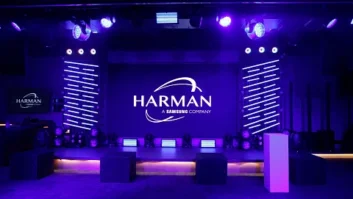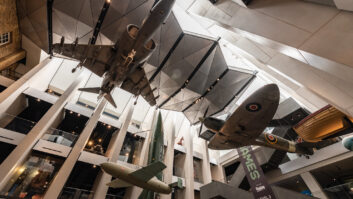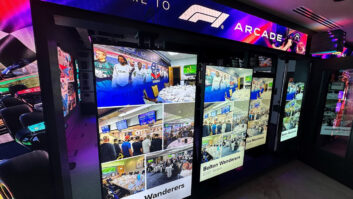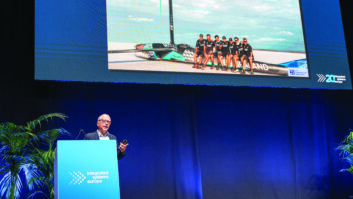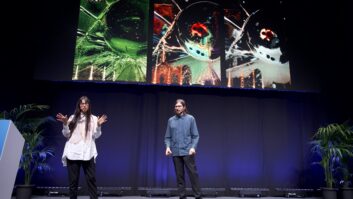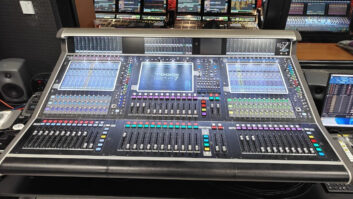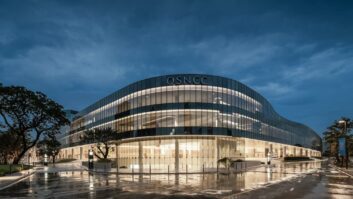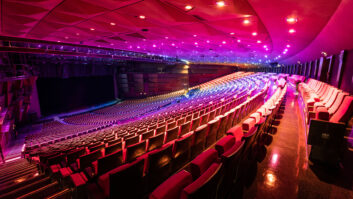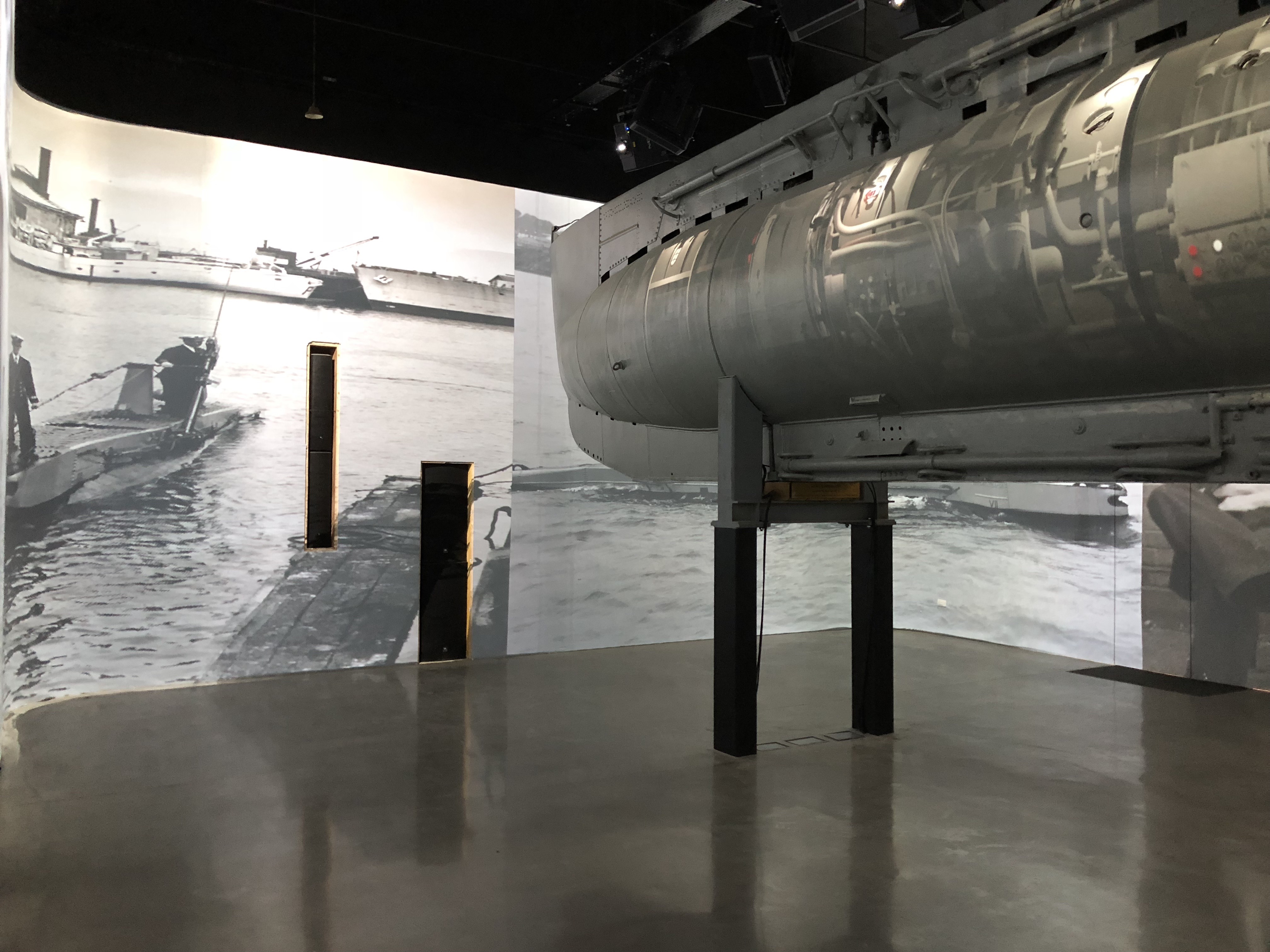
Bringing the ‘inside out’ is one of the underlying themes of the Scottish Submarine Centre in Helensburgh and in choosing to do this with a Cold War-era submarine they could hardly have selected a more spectacular example. Although the X51 ‘midget submarine’ HMS Stickleback is too small for visitors to get inside, it has been brought to vivid life on the outside through the use of the latest projection mapping technology. The result has been an instant hit with visitors and a major addition to the local tourism infrastructure.
But it has been a multi-year journey to get to this point, as chairman and founder Brian Keating can attest. A successful businessman and entrepreneur who is behind several successful golf resorts and hotels, Keating has been resident in Helensburgh for 15 years. He had been aware that there was a gap for an attraction that “honoured the history of submariners in the town”, but the impetus to take action was heightened by the fact that Helensburgh was “struggling like a lot of small towns in terms of footfall going down”.
When he was made aware of the possible availability of a miniature submarine that could provide the heart of a permanent attraction, and told that he “had two years to use it or lose it”, the seed for what became the Scottish Submarine Centre was sown. It was clear that it would have to be housed indoors “because of rust”, so the primary issue then was “how to interpret it and base an attraction around a single artefact. And it quickly became clear that we could use virtual reality and projection mapping to tell a host of different stories with the submarine as the centrepiece.”
Once the room – formerly King Street Hall, the annex of St Columba Church – had been identified, there followed an intensive period in which the inside of the sub was painstakingly recreated in the form of CAD drawings, which were then used as the basis for an elaborate computer simulation in which “we photo-realistically added to everything, in other words we considered what happened when a specific action was taken, or a button pressed, inside the submarine. We went through the process of compositing, rendering and then threw the projections up onto the outside of the submarine… and it looked fantastic!”
Ultimately, it took the best part of two years to create the VR experience for the centre, “although there were gaps [for research and experimentation] as we did not have a reference to work to.” The result of their labours is a process that Keating has dubbed ‘inside out’, whereby the inside of an object can be recreated on its outside via the use of the latest projection mapping technology and techniques.
Logically enough, the first ‘story’ to be told is about the X51 itself, providing a broad overview of the boat’s history, how it works, and how it came to be in Helensburgh. Moving forward new content and exhibitions are expected to be introduced to the centre on a frequent basis.
Fulfilling a vision
Integral to helping Keating fulfil his vision for the Scottish Submarine Centre has been Glasgow-based AV supply and installation company HI Audio Visual (HIAV), whose Ken Callen recalls being introduced to Keating at ISE 2015 “and we got on like a house on fire! We have really been talking about and working on the project ever since.”
The specification of the latest, most capable projection technology was always going to be critical to the success of the installation. Ultimately, HIAV specified a total of 26 NEC PX803UL-BK 8000 ANSI WUXGA laser projectors, equipped with NEC NP31ZL Wide Zoom lenses.
Masterminding a configuration that will be used for a wide variety of visitor-oriented shows as well as corporate gatherings and other possible applications are six AV Stumpfl Wings Engine Pro Quad servers. “We did consider other systems, but the Wings Engine had a number of specific features that we found attractive and useful for this project, and indeed we have been very pleased with our choice,” says Callen. “The backup and support we have received from the company has also been excellent.”
Providing impactful sound for the room’s many uses meant that the expectations of the audio system were no less substantial. “We did want to be able to achieve a real clarity of sound, such as for explosions that occur in some of the VR content, and also for different events that may be booked in to take place here,” says Callen.
The resulting system leans heavily on the current JBL range, including CBT1000 and CBT70J-1 line array speakers for the main hangs, AC18/95 speakers located under the sub, and a quartet of ASB6128 subwoofers for optimum low-end reinforcement. Crown DCi series amplifiers power the audio system, while processing and signal distribution are courtesy of BSS’ BLU-160 devices running on a Dante network.
The fit-out was completed at the end of March, although fine-tuning has continued and there is now the possibility of adding to the system in the future, not least in the form of a permanent immersive audio processor that would allow the 32-speaker configuration to be used with even greater flexibility.
Experimental applications
Now that the centre is up and running, Keating and his team are continuing to explore possible new applications. There have already been a series of screenings of The Beatles’ classic animation Yellow Submarine, while “plays and other cultural events” are on the schedule for the months ahead.
“There is a lot of thought and experimentation going into how the space might be used, for example of how music can be mixed with images. Another thing that’s being looked into is green-screening actors into the submarine to interact with the CAD animations we have created. The centre has really captured the attention of artists, musicians and photographers,” he confirms.
Perhaps most critically of all, the attraction is also playing its role in the revitalisation of Helensburgh as a magnet for tourists. The centre is “on track” for its initial target of 20,000 visitors per year, and the commencement of the school year in September is likely to deliver a further boost.
“We have already received a great deal of interest there,” says Keating, “and we are now working on our programme for 2019.”
www.avstumpfl.com
www.bssaudio.com
www.crownaudio.com
www.extron.com
www.hiav.co.uk
www.jblpro.com
www.nec-display-solutions.com
